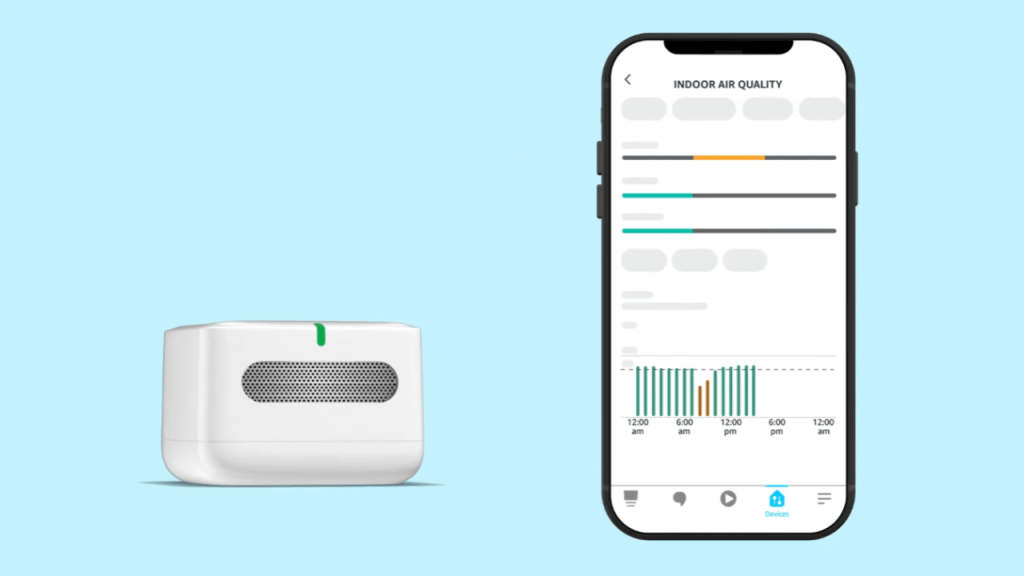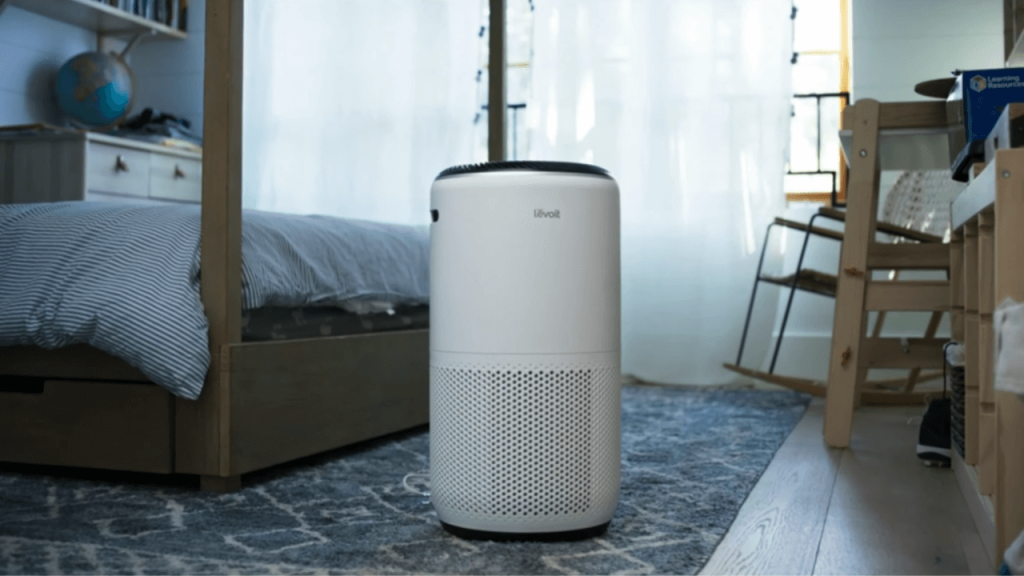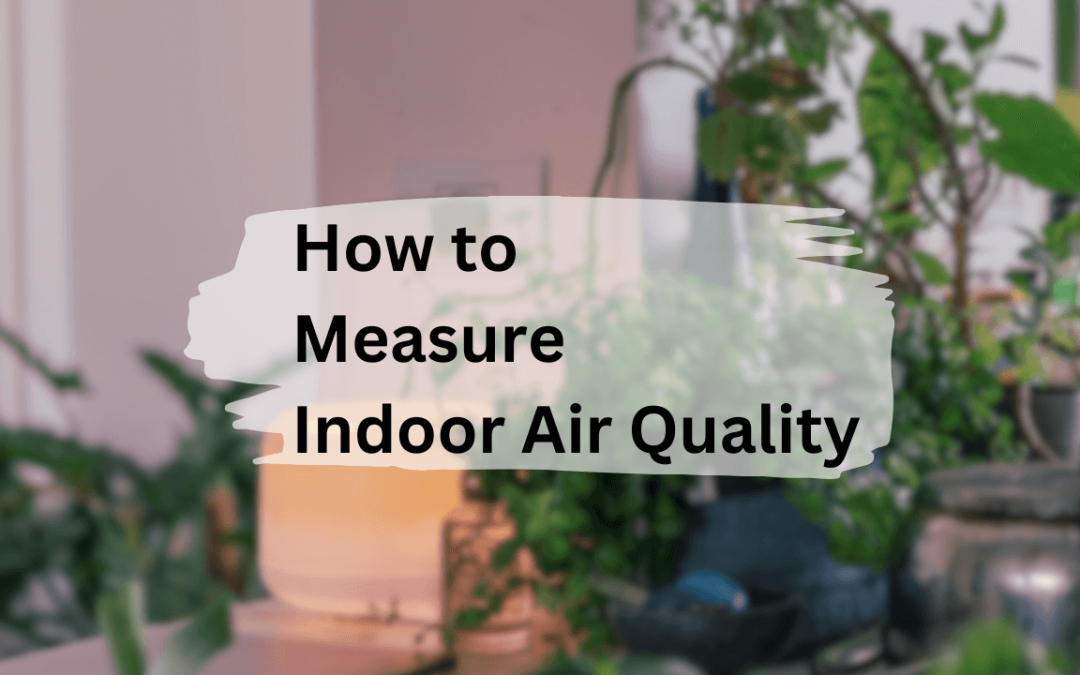Indoor air quality (IAQ) is essential for the health and well-being of individuals in various indoor settings. I am aware of the significant impact of IAQ. It’s vital to understand that indoor air can be more polluted than outdoor air due to trapped pollutants.
Indoor spaces like homes, offices, schools, and public buildings can contain a variety of pollutants from sources like materials, furnishings, cleaning products, and outdoor contaminants. Over time, these pollutants accumulate and compromise IAQ.
Poor IAQ can lead to health problems, including respiratory issues and allergies, and harm the environment through air pollution.
I stress the importance of maintaining good IAQ for people and nature. We can achieve this through strategies like ventilation, regular cleaning, air purifiers, and choosing low-emission products.
Recognizing the hazards of indoor air pollution and taking steps to improve IAQ are crucial. Prioritizing IAQ helps create healthier indoor environments, benefiting both people and the environment. I promote practices that enhance IAQ for a harmonious coexistence between humans and nature.
Importance of measuring indoor air quality

In light of these concerns, learning how to measure indoor air quality (IAQ) becomes an essential task. Comprehensive assessments are vital for identifying the presence of pollutants and their sources within indoor environments, enabling us to take targeted actions to enhance IAQ and safeguard the health of building occupants.
By actively monitoring IAQ and pinpointing pollutants such as volatile organic compounds (VOCs), particulate matter, and mold spores, we are equipped to implement effective strategies aimed at mitigating their harmful effects. This proactive approach encompasses improving ventilation, utilizing air purification technologies, minimizing sources of pollutants, and advocating for proper maintenance routines.
As an advocate for environmental stewardship and the well-being of individuals, I stress the significance of continuous monitoring and improvement of IAQ. Collaborating and applying evidence-based methods, we can achieve and maintain clean and safe indoor air, ensuring the well-being of all individuals. Through understanding and applying techniques on how to measure indoor air quality effectively, we take a significant step towards creating healthier living and working spaces for everyone.
Common Indoor Air Pollutants
Understanding the sources of indoor particulate matter is crucial for maintaining healthy indoor spaces. Particles, like dust and fine particles, can accumulate indoors and affect respiratory health. Sources of these particles include outdoor pollution, cooking, cleaning, and smoking.
Understanding how to measure indoor air quality is key to safeguarding respiratory health, as various particles like dust and fine particulates can accumulate and deteriorate the air within indoor spaces. These particles can originate from several sources, significantly impacting the air we breathe indoors.
Outdoor pollution, especially in urban settings, is a notable contributor, with fine particles from vehicles and industrial activities making their way into our homes and workplaces. Cooking activities also play a role, as methods like frying and grilling release microscopic particles into the air, which can lead to discomfort and respiratory issues.
Similarly, routine cleaning processes, including dusting and vacuuming, can disturb settled particles, increasing the risk of inhalation unless proper cleaning techniques are employed to minimize their dispersion. The act of smoking indoors, whether it involves cigarettes or other tobacco products, significantly increases the level of particulate matter, underlining the importance of maintaining smoke-free environments to protect our lungs.
Furthermore, larger particles such as pollen and pet dander are known triggers for allergies and asthma, emphasizing the need for effective cleaning, the use of air purifiers, and proper ventilation to reduce particle concentrations and enhance respiratory health indoors.
Biological pollutants
Biological pollutants, including mold, bacteria, and viruses, can pose health risks in indoor environments. These organisms thrive in damp areas like basements, bathrooms, and kitchens. Mold, a common indoor pollutant, releases airborne spores that can trigger allergies and respiratory issues. Bacteria, although mostly harmless, can cause problems when they proliferate in moist conditions, potentially releasing toxins harmful to humans. Viruses, responsible for respiratory illnesses, can spread easily in crowded indoor settings.
To mitigate these risks, controlling moisture levels is crucial. Proper ventilation, dehumidifiers, and addressing leaks help reduce humidity. Regular cleaning and maintenance prevent the growth and accumulation of biological pollutants. I emphasize maintaining balanced moisture levels to create healthier indoor spaces that support well-being and nature-human coexistence.
Chemical pollutants
Chemical pollutants, including VOCs, formaldehyde, and carbon monoxide, can harm human health and the environment in indoor spaces. These pollutants can originate from various sources like building materials, cleaning products, and furniture. Prolonged exposure to high levels of these chemicals can lead to health issues, including cancer.
VOCs, found in common household items, can cause symptoms like headaches, nausea, and eye irritation when inhaled. Some VOCs are linked to long-term health risks, including cancer.
Formaldehyde, prevalent in building materials and household products, can lead to respiratory irritation and allergies.
Carbon monoxide (CO), produced by fuel-burning appliances, poses a serious health hazard. It can cause symptoms like headaches and nausea and, in severe cases, be life-threatening.
To reduce risks, choose low-VOC building materials and furnishings and ensure proper ventilation through exhaust fans and open windows. Regular maintenance of fuel-burning appliances and carbon monoxide detectors are essential. I advocate for indoor environments that prioritize human well-being and nature’s harmony, achieved by addressing chemical pollutants through careful material selection, ventilation, and maintenance practices.
Methods of Measuring Indoor Air Quality
Monitoring and assessing air quality is essential for promoting a healthy living environment.
The Air Quality Index (AQI), a national standard, measures both outdoor and indoor air quality.
AQI focuses on five major pollutants: ground-level ozone, particulate matter, carbon monoxide, sulfur dioxide, and nitrogen dioxide, providing a numerical value representing overall air quality.
This value comes with a health advisory, empowering individuals to protect their health when air quality is compromised.
Assessing indoor air quality with the AQI helps individuals understand and mitigate pollutant exposure for a healthier indoor environment.
Recognizing the interconnectedness of indoor and outdoor environments, utilizing the AQI helps us prioritize healthier living spaces for people and nature.
Let’s continue to monitor and improve air quality, working toward a healthier and more sustainable future.
Indoor air quality meters and monitors

Monitoring indoor air quality is essential for the well-being of humans and plants in indoor spaces. Indoor air quality meters and monitors are valuable tools for tracking and measuring pollutants.
These devices measure various indoor air pollutants like particulate matter, volatile organic compounds (VOCs), and carbon dioxide, providing insights into air quality.
One key advantage is their real-time data provision, issuing alerts when pollutant levels exceed safe limits, enabling immediate action.
Indoor air quality meters and monitors come in various forms, from portable to permanent installations, catering to different needs and budgets.
By using these devices, we proactively maintain healthier indoor spaces for people and plants, recognizing the interconnectedness of their well-being.
Embracing indoor air quality monitoring is part of our commitment to creating healthier indoor environments for humans and the natural world.
Chemical testing
Comprehensive chemical testing is vital for accurate indoor air quality assessment. It involves collecting air samples and analyzing them to identify specific pollutants like formaldehyde, radon, and lead.
This testing provides detailed insights into pollutant types, levels, and sources, enabling targeted mitigation strategies.
While chemical testing can be costlier and more time-consuming, its accuracy is crucial when specific pollutants are a concern.
We prioritize accurate testing to ensure the well-being of people and plants indoors. Embracing chemical testing helps us make informed decisions to create healthier indoor environments.
Despite its challenges, the benefits of chemical testing in understanding pollutant concentrations and sources make it a valuable tool in indoor air quality assessment.
Biological testing
Biological testing is crucial for assessing indoor air quality by identifying mold, bacteria, and other biological pollutants. This involves collecting samples and lab analysis to determine the type and concentration of these pollutants.
The main purpose is to pinpoint the source and extent of contamination, enabling effective remediation and prevention strategies. It also helps assess the success of remediation efforts through follow-up testing.
Biological testing should be conducted by professionals using proper techniques and accredited labs for accurate results.
Incorporating biological testing into indoor air quality assessment safeguards occupants’ health and contributes to a healthier indoor environment.
We value the connection between indoor and outdoor environments, using biological testing to create healthier indoor spaces while preserving the natural surroundings.
Other methods
Measuring indoor air quality (IAQ) is crucial for creating healthier indoor environments. Methods like monitoring humidity, temperature, and CO2 levels help maintain optimal conditions and ventilation. Occupant surveys provide valuable insights into their experiences and symptoms related to poor IAQ.
The choice of method depends on factors like the pollutants of concern, desired detail, and available resources. We prioritize IAQ for the well-being of occupants.
In summary, employing various IAQ measurement methods, based on specific needs and resources, allows us to enhance indoor environments and ensure occupants’ well-being.
Factors to Consider When Choosing an Indoor Air Quality Monitor
Learning how to measure indoor air quality (IAQ) effectively involves selecting the appropriate IAQ monitor to ensure a healthier indoor atmosphere. It’s vital to opt for monitors that target specific pollutants impacting your space, such as particulate matter, volatile organic compounds (VOCs), or carbon dioxide (CO2), aligning with the unique needs of your indoor environment.
For tracking particulate matter like dust and pollen, which are known to affect respiratory health adversely, a monitor employing sensors or laser-based technology for precise measurement is advisable. VOCs, on the other hand, emanate from a variety of sources and require real-time monitoring with a device equipped with VOC sensors to accurately assess indoor pollution levels. Similarly, monitoring CO2 is essential for evaluating the effectiveness of your ventilation system, necessitating a monitor capable of specific CO2 level measurements.
When choosing an IAQ monitor, it’s important to consider the types of pollutants prevalent in your environment and how they might impact health. Evaluate the sources of these pollutants and their potential effects to make an informed choice. Also, factors such as the monitor’s accuracy, reliability, user-friendliness, and its integration with existing systems should influence your decision, ensuring that you can effectively monitor and enhance the indoor air quality.
Emphasizing the well-being of your indoor environment, selecting the right IAQ monitor is a fundamental step in learning how to measure indoor air quality, aiming to improve the air quality for the health and comfort of all building occupants.
Accuracy and precision
Selecting a reliable indoor air quality (IAQ) monitor is crucial for accurate monitoring. High-quality monitors undergo rigorous testing and calibration to ensure precise and consistent measurements.
Accurate readings are essential for informed decision-making and effective air quality improvement strategies. Quality monitors meet stringent standards and deliver precise pollutant measurements, allowing for accurate IAQ assessment.
Regular calibration maintains a monitor’s accuracy over time, aligning it with established standards. Calibration fine-tunes the device for reliable and consistent data collection, enhancing overall reliability.
Reliable measurements offer valuable insights into pollutant levels and their sources. This information empowers and stakeholders to develop effective interventions for better indoor air quality.
In summary, prioritize IAQ monitors that undergo rigorous testing and calibration to ensure accurate and reliable measurements. This enables to assess and monitor IAQ confidently, leading to informed decisions and effective strategies for healthier indoor environments.
Sensor lifespan and replacement
Selecting an indoor air quality (IAQ) monitor involves considering sensor lifespan and replacement requirements. Sensors are critical for pollutant measurement, but they degrade over time, potentially leading to inaccurate readings.
Evaluate the sensor lifespan of IAQ monitors, which varies from months to years. Understanding this lifespan helps plan and budget for replacements.
Consider the cost and ease of sensor replacement. Some monitors allow user-friendly replacements, while others may require professional assistance or specialized tools.
By choosing a monitor with sensors that have a reasonable lifespan and assessing replacement factors, can effectively manage their monitoring equipment. Regular sensor replacement maintains data accuracy, enabling informed decisions and IAQ improvements.
In conclusion, sensor lifespan, replacement cost, and ease are vital considerations when selecting an IAQ monitor. This ensures ongoing accuracy and efficient management of monitoring efforts.
Display and ease of use
Selecting an indoor air quality (IAQ) monitor should prioritize user-friendly design and helpful features. Look for an easy-to-read display and straightforward controls.
An IAQ monitor assesses air quality, so a clear display is crucial for interpreting data effectively. It should present information in a readily understandable manner, enabling quick assessment of pollutant levels.
Simple controls are equally important, ensuring easy navigation and reducing operational errors. Intuitive controls enhance efficiency and user experience.
Some monitors offer extra features, such as real-time data logging for tracking trends and alerts for prompt action when pollutant levels exceed safe limits. These features enhance the monitoring process.
Prioritizing monitors with user-friendly displays and controls, along with additional functionalities, allows to efficiently gather and interpret air quality data. It facilitates effective indoor air quality management in various environments.
Compatibility with smart home technology
Consider compatibility with smart home technology when selecting an indoor air quality (IAQ) monitor.
- Convenience of Remote Monitoring: Some IAQ monitors offer remote access via smartphones or other devices, allowing real-time IAQ data monitoring from anywhere.
- Assess Your Needs: Evaluate if remote monitoring aligns with your specific monitoring requirements. It may be useful for multiple locations or personal preferences.
- Not Mandatory: While convenient, smart home compatibility is not mandatory for everyone. Prioritize features crucial for accurate monitoring and those aligned with your needs.
In summary, weigh the benefits of smart home compatibility against your specific IAQ monitoring needs. Choose a monitor that effectively meets your requirements and provides the desired level of convenience.

Actions to Take Based on Indoor Air Quality Measurements
Understanding indoor air quality (IAQ) measurements is crucial for identifying and addressing sources of pollution that affect both people and plants.
IAQ measurements help pinpoint pollution sources, such as cleaning products, furniture, or building materials. Identifying these sources enables targeted actions to improve IAQ, like using eco-friendly cleaners or low-emission products.
Improving IAQ benefits human health and plant vitality. Recognizing the importance of IAQ measurements allows us to create healthier indoor environments for all.
In summary, IAQ measurements help identify pollution sources, allowing us to take actions that improve IAQ and benefit both humans and plants.
Increase ventilation
Proper ventilation is essential for maintaining healthy indoor environments for both people and plants.
Increasing ventilation, whether through open windows or mechanical systems, helps reduce indoor pollutant concentrations and improves indoor air quality (IAQ). It also controls humidity levels, preventing mold growth, which can negatively affect IAQ and plant health.
I stress the importance of ventilation for the well-being of both humans and indoor greenery.
In summary, prioritizing ventilation enhances IAQ, benefiting both individuals and indoor plants.
Use air purifiers or filters

Clean and healthy indoor air is vital for the well-being of both humans and plants.
Air purifiers and filters are essential tools for improving indoor air quality by removing various pollutants, such as particulate matter, pollen, and pet dander.
When choosing an air purifier or filter, consider the specific pollutants in your indoor environment. Select equipment tailored to your needs, like a high-efficiency particulate air (HEPA) filter for fine particle removal.
Ensure the chosen unit is the right size for the area you want to purify to maximize its effectiveness.
In conclusion, I recommend selecting air purifiers or filters that target the pollutants in your indoor space, promoting cleaner air and a healthier environment for everyone, including your indoor plants.
Adjust activities or behavior
Indoor air quality (IAQ) is crucial for human health and the environment. IAQ measurements help identify areas for improvement in our daily activities.
Choose eco-friendly cleaning products to reduce pollutants in the air. Use them in moderation and ventilate the area properly for better IAQ.
Smoking indoors significantly harms IAQ. Encourage smoking outdoors or in designated areas to prevent toxin buildup.
Proper ventilation is essential. Use kitchen exhaust fans and open windows while cooking to expel pollutants.
These behavioral changes contribute to better IAQ, creating a healthier indoor environment for everyone, including plants.
I stress the importance of recognizing our daily activities’ impact on IAQ and adopting eco-friendly practices to create a cleaner and healthier indoor space for all.
Regularly monitor indoor air quality
Regular monitoring is vital for maintaining a healthy indoor environment. It helps us identify changes in pollutant concentrations and assess the effectiveness of our air quality improvement efforts.
By monitoring consistently, we stay vigilant, detect pollution sources, and take measures to address them. It also allows us to evaluate the impact of our actions and make necessary adjustments.
Regular monitoring demonstrates our commitment to well-being and a balanced ecosystem. Let’s create spaces where clean air is a fundamental necessity, benefiting both occupants and the environment.
Conclusion
In conclusion, understanding and managing indoor air quality (IAQ) is crucial for ensuring a healthy, safe, and comfortable environment, whether at home or work. This guide has provided an overview on how to measure indoor air quality, highlighting the importance of identifying key pollutants, utilizing appropriate monitoring tools, and following a detailed process for accurate air quality assessment. We’ve also discussed how to interpret measurement results and implement actionable steps to address any issues found.
Improving IAQ involves more than just using the right tools; it requires a holistic strategy that encompasses regular monitoring, diligent maintenance, and proactive measures to reduce health risks. Neglecting indoor air quality can lead to various health problems, ranging from minor annoyances like headaches and allergies to more severe conditions like respiratory diseases.
By steering clear of common mistakes, applying effective strategies for improvement, and recognizing the importance of consistent air quality evaluations, individuals can create a healthier living or working space. This guide is designed to equip readers with the necessary knowledge and tools to take charge of their IAQ, promoting environments that support well-being and safety. Through understanding how to measure indoor air quality effectively, we can ensure our indoor environments are places where health and comfort are prioritized.

